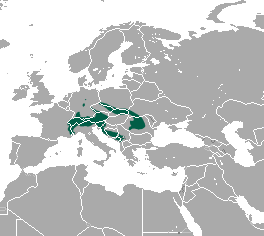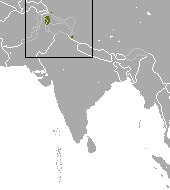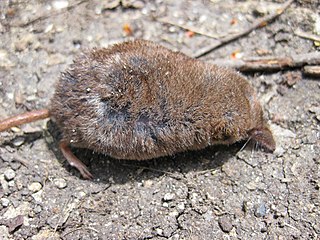
The red-toothed shrews of the subfamily Soricinae are one of three living subfamilies of shrews, along with Crocidurinae and Myosoricinae. In addition, the family contains the extinct subfamilies Limnoecinae, Crocidosoricinae, Allosoricinae and Heterosoricinae. These species are typically found in North America, northern South America, Europe and northern Asia. The enamel of the tips of their teeth is reddish due to iron pigment. The iron deposits serve to harden the enamel and are concentrated in those parts of the teeth most subject to wear. Members of the genera Chimarrogale, Nectogale, Neomys (Nectogalini) and some members of Sorex (Soricini) are known as water shrews, due to having a semi-aquatic lifestyle.

The American pygmy shrew is a small shrew found in Northern Alaska, Canada, and the northern United States, south through the Appalachian Mountains. It was first discovered in 1831 by naturalist William Cane in Georgian Bay, Parry Sound.

The genus Sorex includes many of the common shrews of Eurasia and North America, and contains at least 142 known species and subspecies. Members of this genus, known as long-tailed shrews, are the only members of the tribe Soricini of the subfamily Soricinae. They have 32 teeth.

The Eurasian pygmy shrew, often known simply as the pygmy shrew, is a widespread shrew of the northern Palearctic.

The common shrew, also known as the Eurasian shrew, is the most common shrew, and one of the most common mammals, throughout Northern Europe, including Great Britain, but excluding Ireland. It is 55 to 82 millimetres long and weighs 5 to 12 grams, and has velvety dark brown fur with a pale underside. It is one of the rare venomous mammals. Juvenile shrews have lighter fur until their first moult. The common shrew has small eyes, a pointed, mobile snout and red-tipped teeth. It has a life span of approximately 14 months.

The Eurasian least shrew, also called the lesser pygmy shrew, is the second-smallest mammal by mass after the Etruscan shrew.

The alpine shrew is a species of mammal in the family Soricidae. It is found in the alpine meadows and coniferous forests of central and southern European mountain ranges.

The Kashmir pygmy shrew is a species of mammal in the family Soricidae. It is found in India and Pakistan.

Preble's shrew is a small shrew distributed across the Great Basin of the United States and southern British Columbia in Canada.

The Caucasian pygmy shrew or Ukrainian shrew is a species of mammal in the family Soricidae. It is found in Armenia, Azerbaijan, Georgia, Russia, Ukraine, East Azerbaijan Province in Iran, and Turkey.
Rockport virus (RKPV) is a single-stranded, enveloped, negative-sense RNA orthohantavirus.









